Book Review ➟ LEGO The art of minifigure®
The author of the book is Brian Barrett, editor of WIRED and by all accounts a minifigure lover. The book is in hardback and is divided into 8 chapters ranging from what was before the minifigure to the obligatory question of what's next after the minifigure (by god, I hope it's more minifigures!!! )
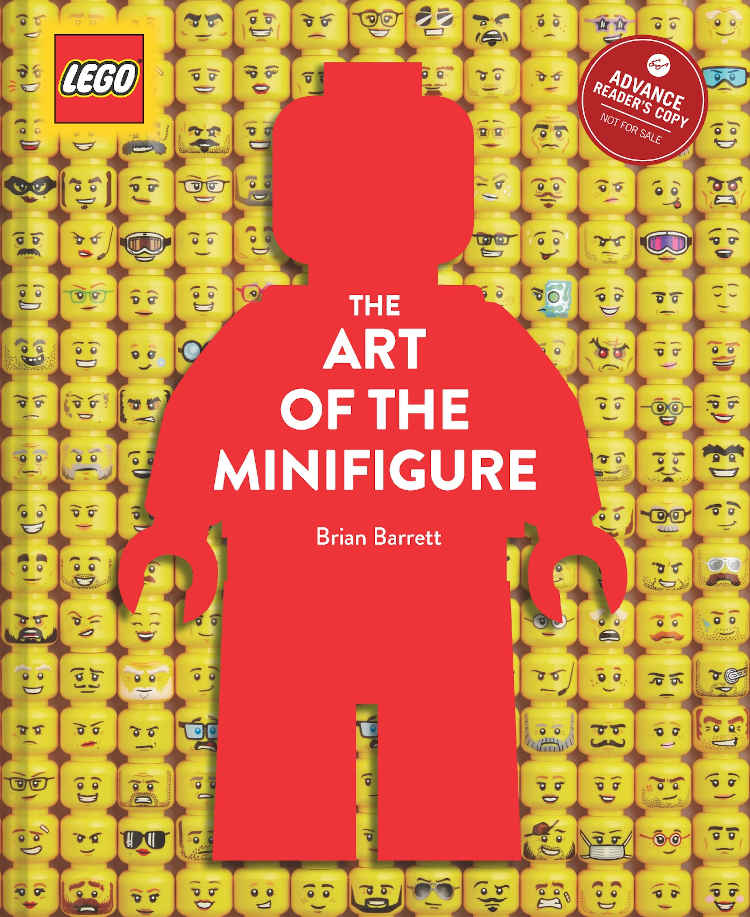
We have a brief introduction of two important figures of the LEGO group, from which I keep these ideas:
The modernity of today's minifigure is the essence of creating iconic characters that are totally recognisable at first glance, in such a way that they are able to spark ideas for building environments for them. (Tara Wike) Design Director, The LEGO Group
While other toys of the time were created to realistically represent the characters they depicted, or to play with the unrealistic proportions of the popular muscle-bound heroes of the time, LEGO minifigures did the exact opposite. Their design captured the essence of the brick world in its purest form. (Matthew Ashton) Vice President of Design, The LEGO Group
The introduction shows us that in the past the minifigure was just a component that revolved in a brick world. Nowadays it is a real centre of attention where the bricks often revolve around it.
The first chapter is curious as it obviously introduces us to what was before our beloved minifigure and how the first figures were built and how they were much bigger than the current ones. figures that were built and that had a much larger size than the current one with all the problems that this entailed. It seems that the "fault" was the construction of the wheel parts. They made it possible to make vehicles and of course.... Someone had to drive them!
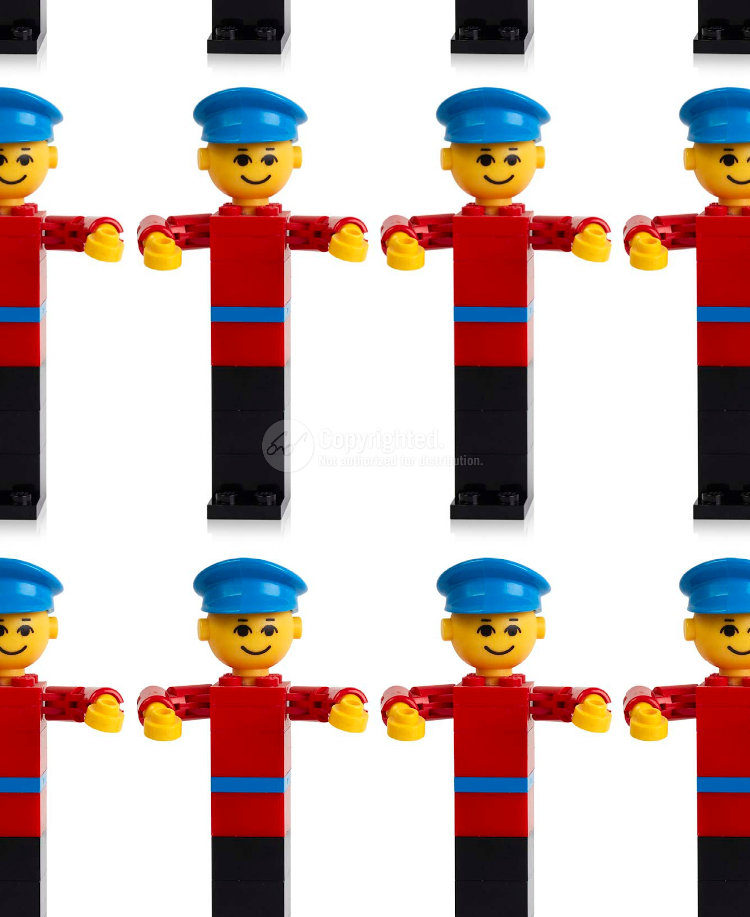
However, they worked on the scale until they got the current scale. These minifigures were quite unique as they had no arms, no legs and no face! They were known as the Stage Extra. The fact that they had no face was simply a technological problem that had yet to be solved. However, despite having marketed these Stage Extra figures, LEGO was already working on something more realistic.
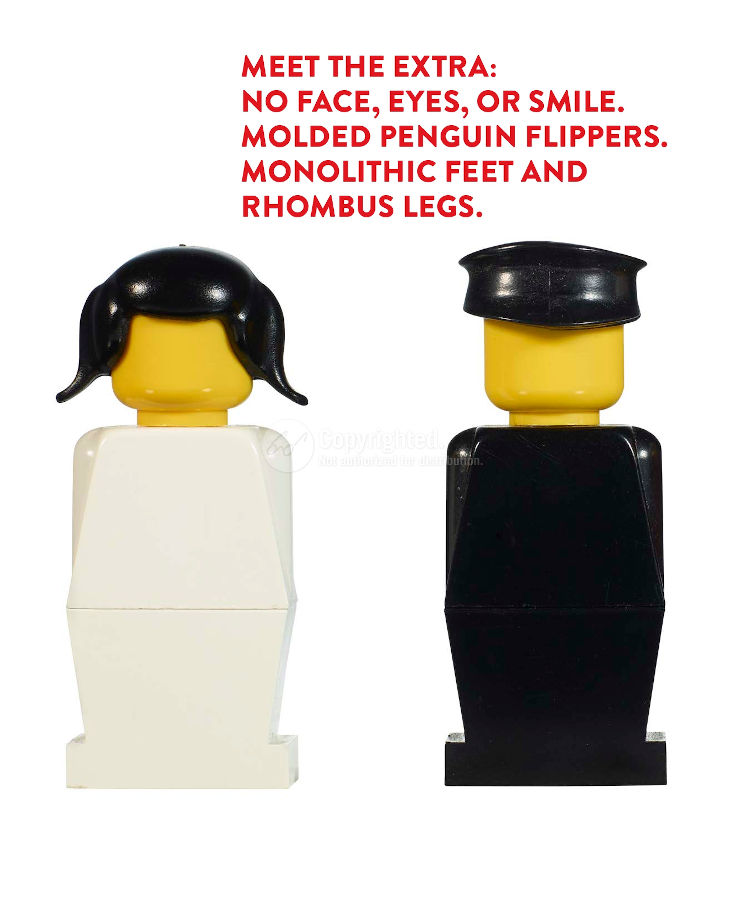
The next chapter focuses on the process of creating a minifigure. How LEGO was working on moulds and functions until it came up with the minifigure as we know it today. The year was 1978. At that time I was also a little minifigure just a few months old and I had no idea that I would grow to love the minifigure world so much :)

The following is an explanatory text about the manufacturing process itself. It goes from how LEGO mixes the colours of our beloved ABS to how the plastic is heated before injection to expel any water it may have and then melt it at about 350º Fahrenheit to be able to inject it under pressure in the moulding machines. In order to try to draw the real scale of the work, the text shows us with numbers the work that is carried out.
In Billund there are 800 moulding machines with 3 moulds each. They work 24 hours a day, 7 days a week with about 700 shift workers. One mould makes about 36 heads and generally holds about 5 million shots (5 million for 36 heads) before repair or maintenance. ABS is not the only material used, for example in transparent bricks or tyres the material is obviously different. Of course the injection of the head in this case is not the final goal of the process but only the beginning. Once this is done there are a sort of processes like for example the face that will come once the parts pass the first process. The injection of parts is counted until the container is full, a robot takes it to a line of conveyor belts where it is shaken to level it and passes through a metal detector, in case something such as a spring has slipped in. If an alert is triggered, the contents are automatically diverted by another route. As with the weight of the boxes, if any weighs more than a gram or two it is not allowed to pass. Once the material has gone through this exhaustive process, the boxes arrive at the warehouse. Look at the number, 240,000 boxes that reach the ceiling. This is where they wait to be packed, printed and packaged until they are displayed on the sales shelves. The colours have changed over time, they have expanded to such an extent that there are even moulds for bi-component parts where multi-colour references are manufactured. This whole process with the improvements over time shows us that the core of the process itself has hardly been altered, like the minifigure. In the case of the faces LEGO has printed some 650 unique faces.
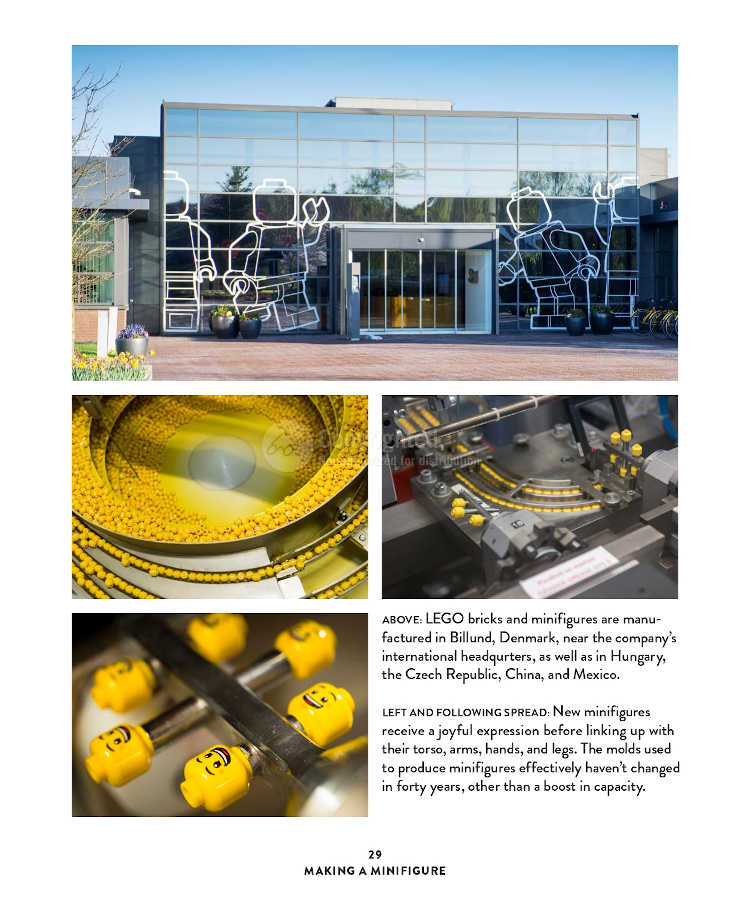
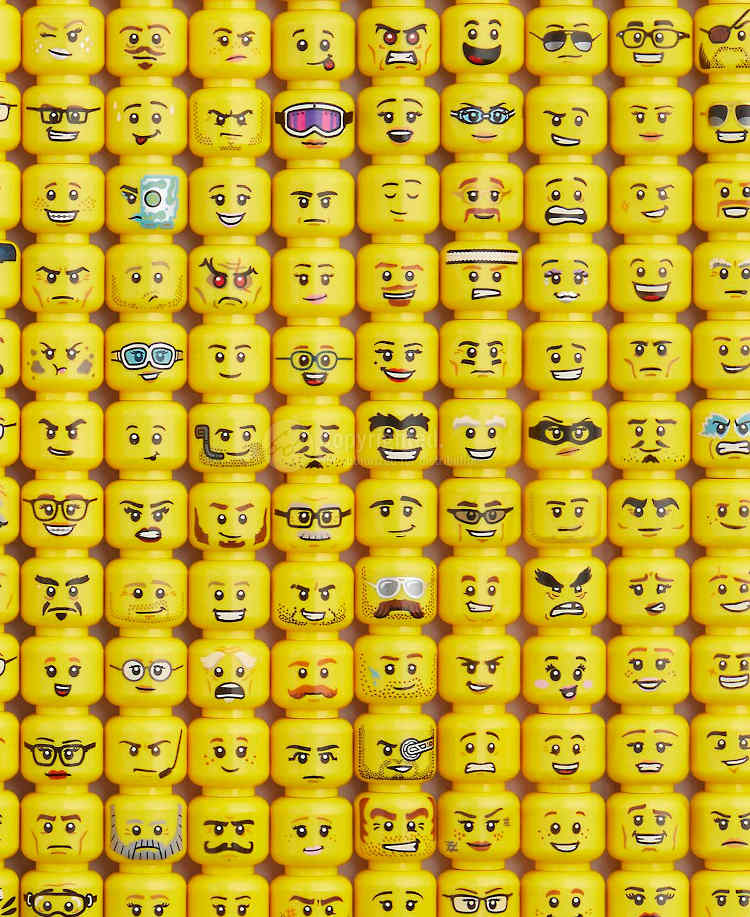
From this point on, the book takes a turn towards the themes that are so dear to LEGO fans. Here, for example, details are given as to why lines such as Castle, Town and Space appeared. They simply represented the past, present and future.
The colours are dealt with, as we avoided grey, green... as we didn't want the children to build war themes. That's why, for example, the emblematic Castle 375 set was yellow with those horses built on it, what memories! Soon LEGO realised how horrible minifigures with torsoes or shields with stickers looked, because after children had been playing with them for a while, they were very damaged. Soon the trend was to move towards the printing of parts, and also soon in the 80's there would be grey castles with different factions such as crusaders and black falcons as well as horses already in a moulded piece. Of course our beloved Forestmen also made their appearance.
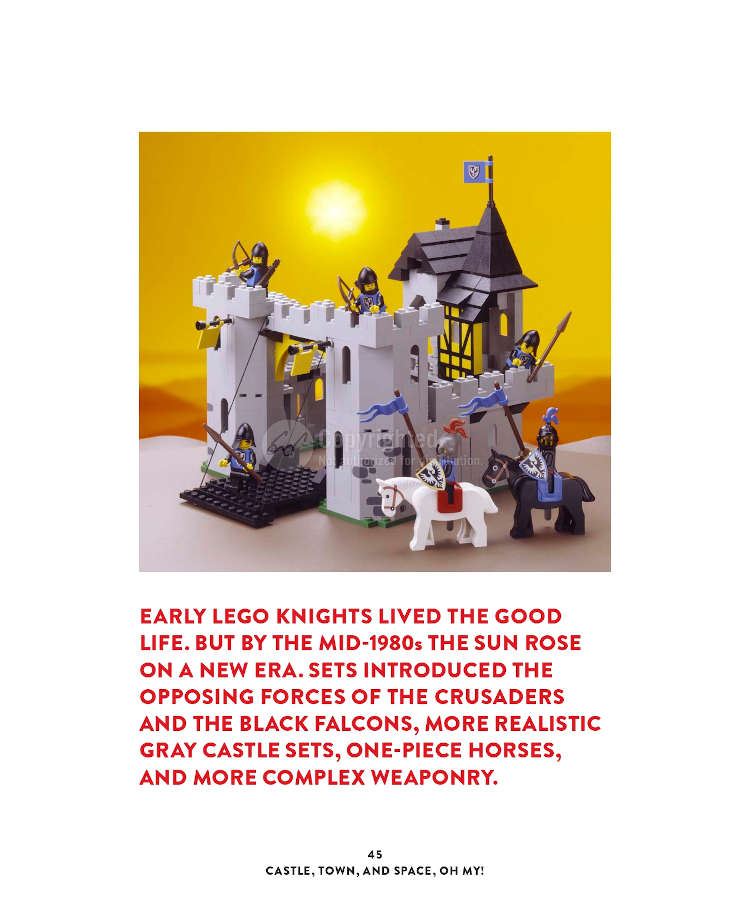
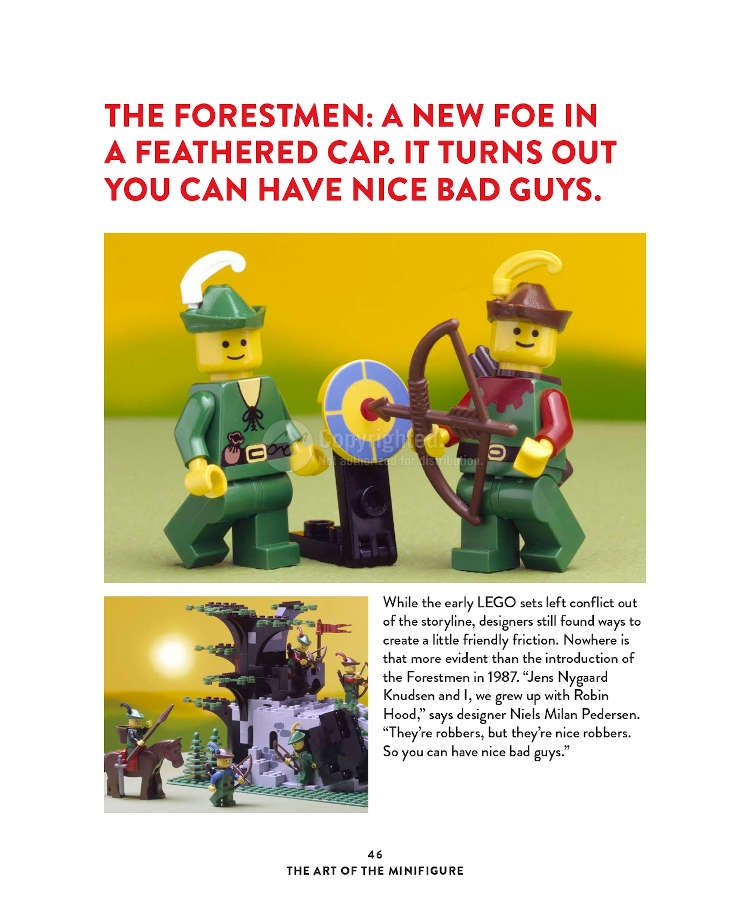
Also mentioned in this chapter are the "non-minifigures". They are those like skeletons, or friends, micro and nano minifigures, etc.... Some of the images take us back in time... how delightful were those old sets...
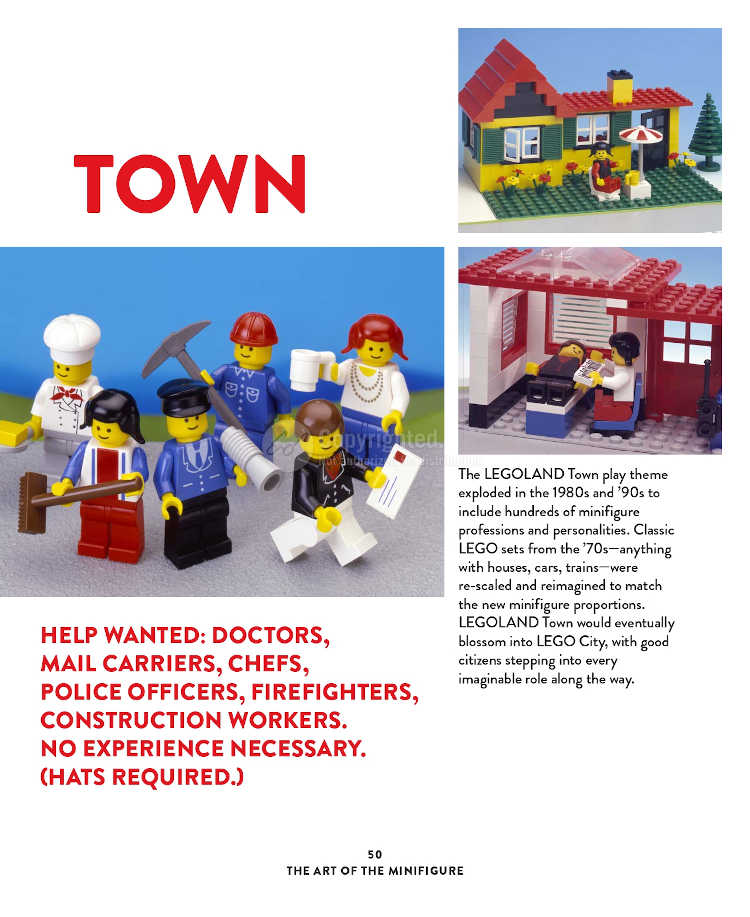

Starting with the pirate theme and thanks to Kjeld Kirk Kristiansen, the minifigures begin to have new mould parts: how could there be a pirate without a beard, a wooden leg or a hook for a hand? The issue of weapons is also addressed, and it seems that incipiently they would only be very old-fashioned, or fantasy weapons. This is still somewhat controversial today, isn't it?
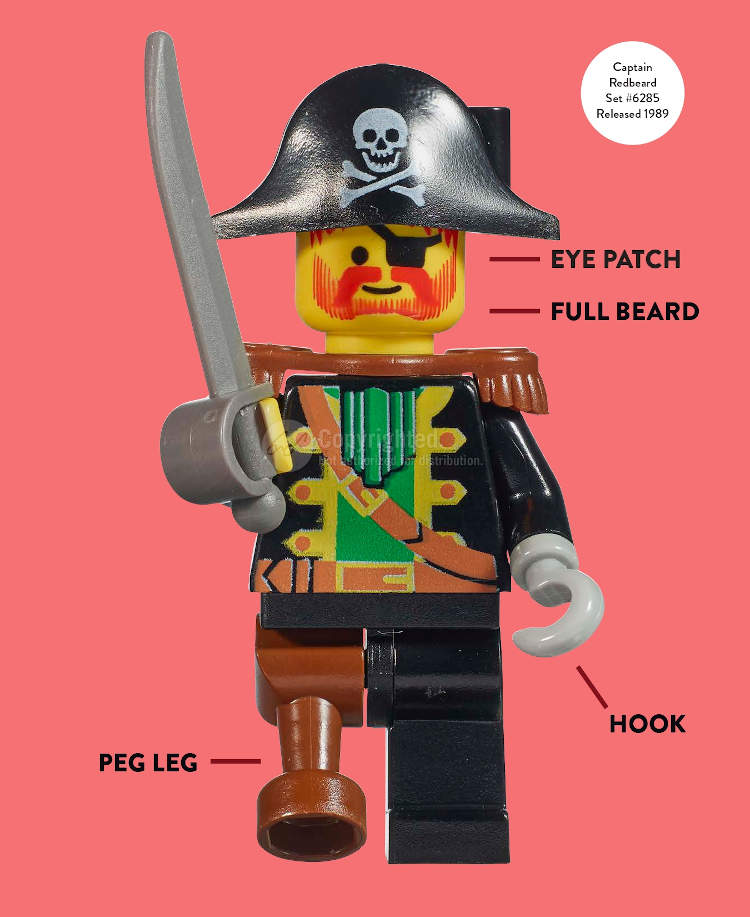
In short, and in order not to give a detailed account of the rest of the publication, we will tell you that from here onwards we will show you some pearls in relation to Star Wars minifigures, Harry Potter, the minifigure series, Spiderman, the creative boom that has meant the infinite expansion of the exciting creativity of minifigures, thus generating a whole diversity of AFOLS, ranging from pure collecting to the creative photography of small and precious scenes.
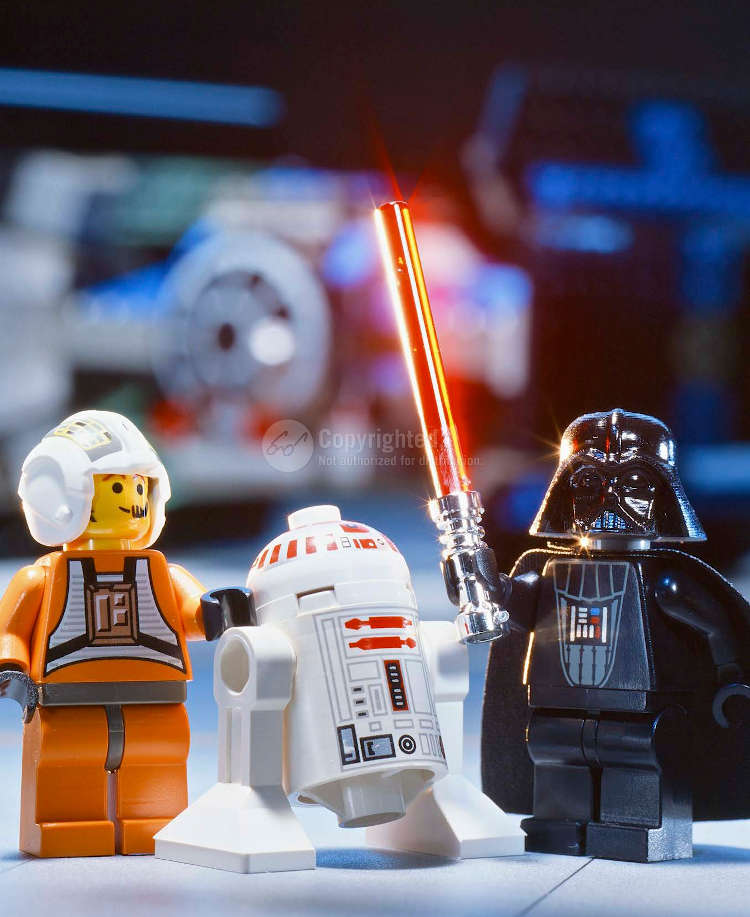
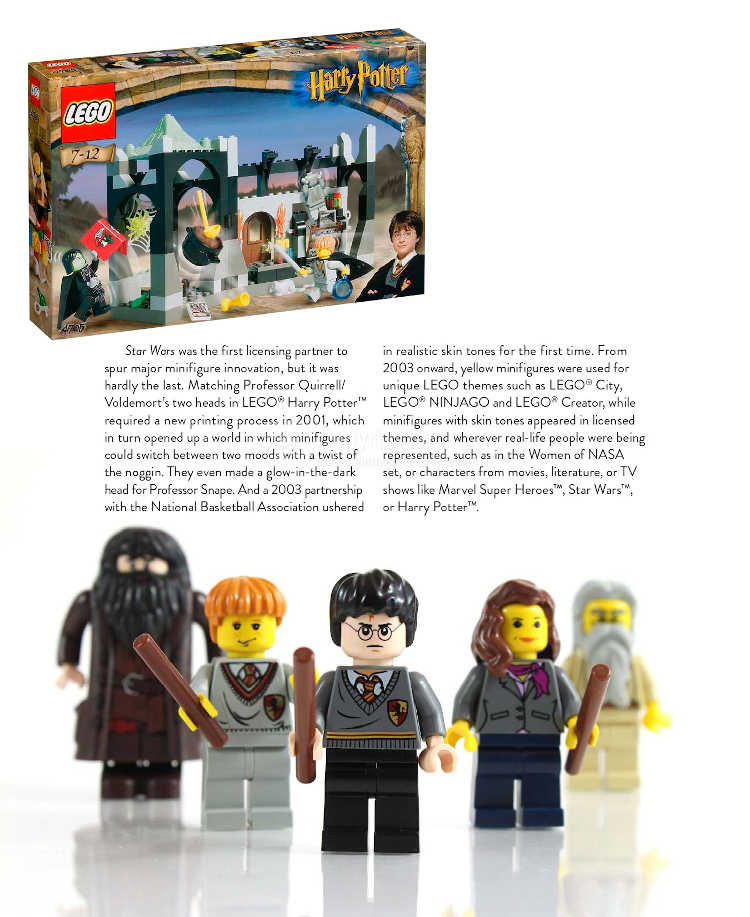
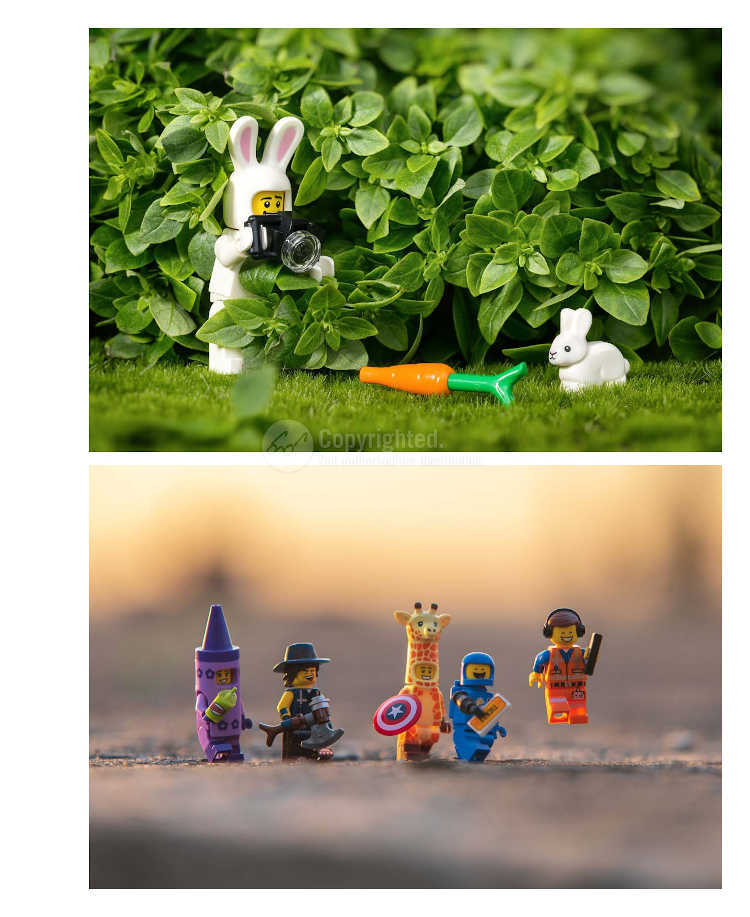
The paragraphs about rare minifigures are really worth reading, how many minifigures I'll never be able to have! :( Ninjago was a game changer in marking the emotional character of its characters. Inspired by a modern "Castle" they certainly showed a communicative and emotional strength that endures to this day. Anyone who has followed season after season will have noticed without a shadow of a doubt the maturing of the characters both aesthetically and emotionally.

Interesting is also the text dedicated to the LEGO film with our beloved Emmet as the main character. Here the creators explain why the novelty of the movements, the way of making the film, the time of work or the groups involved, from LEGO to Warner... not to be missed.
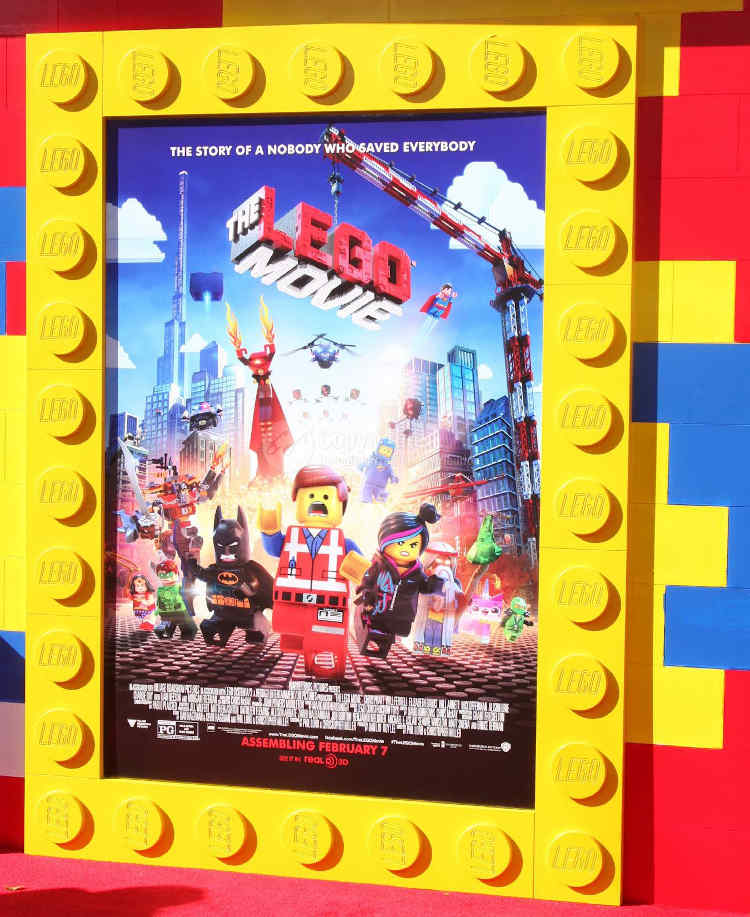
The last part of the book raises the question, what's next? Of course the future of the minifigure is a closely guarded secret of the LEGO group. This part of the book talks about LEGO life and its spirit. I am left with the sentence "The medium will adapt to the minifigure and not the other way around". Of course Hidden side is mentioned as an exercise in an augmented reality layer. Also the issue of the stiff... legs that we have all suffered from is discussed, making an excellent change for a movable one as it should be :). The design process of these developments is explained from inside the company and it is certainly revealing. Mention is also made of the inclusivity and creativity of the LGBTQIA+ community with the beautiful 40516 Everyone Is Awesome set, or NASA Women 21312 from LEGO ideas. As well as of course the wooden "maxifigure" that the artists have left us with such great customised works.
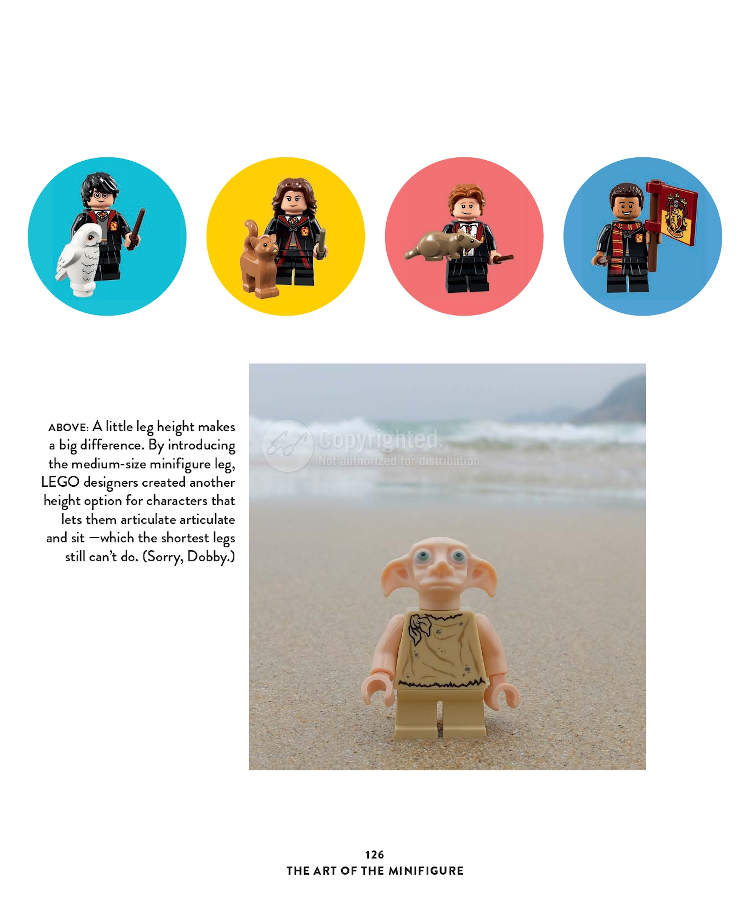
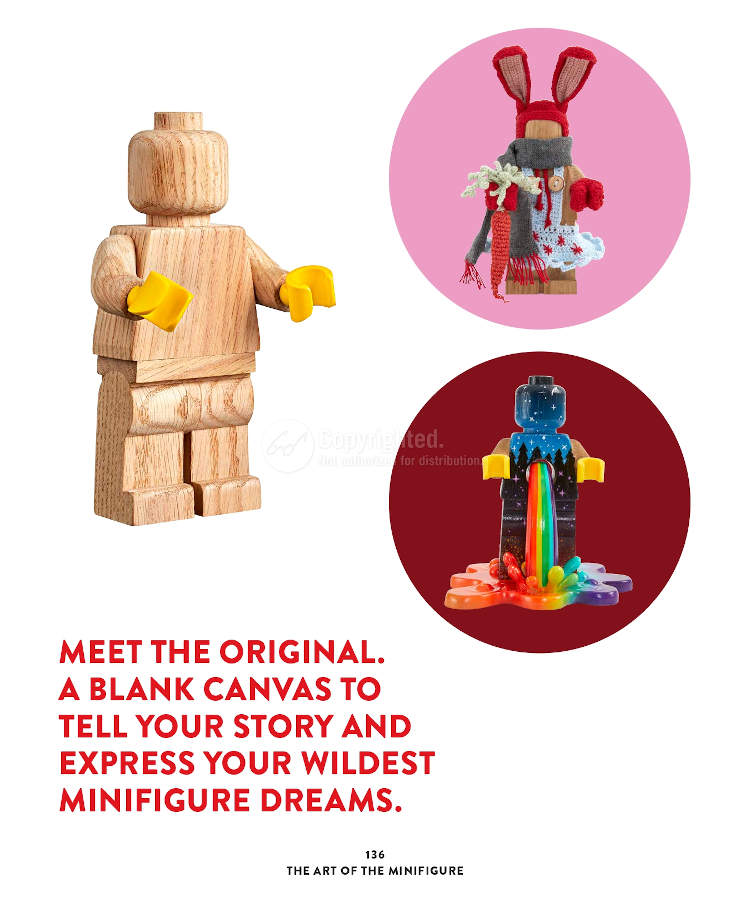
Without a doubt, this is an entertaining and curious book about the world of our beloved minifigure. I recommend it both to AFOLS lovers of the LEGO world in general, the minifigure in particular and of course to all those to whom the minifigure arouses good feelings, memories and great sensations.
We would like to thank LEGO for sending the book for review in this medium. However LEGO neither endorses nor supports our opinions in any way as they are ours alone.
33536